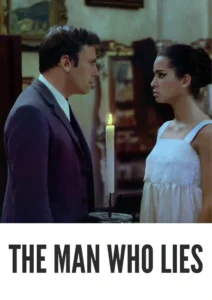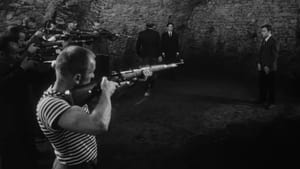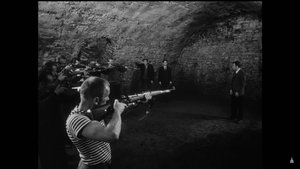Video Sources 0 Views

Synopsis

Immerse yourself in the enigmatic world of The Man Who Lies, a thought-provoking French-Czechoslovak drama from 1968, now beautifully colorized to enhance its surreal and haunting atmosphere. Directed by Alain Robbe-Grillet and starring Jean-Louis Trintignant, this film explores themes of identity, memory, and the elusive nature of truth in a post-war setting. Perfect for fans of art house cinema and those who enjoy films that challenge perceptions, this HD download offers a visually stunning and intellectually stimulating experience.
The Man Who Lies unfolds in a small European town scarred by the Second World War. A man appears, sometimes calling himself Jean and other times Boris, claiming to have been a member of the Resistance. His accounts of his wartime activities are inconsistent, presenting conflicting versions of his role – at times the heroic Jean, supposedly shot by the Germans, and at others, the traitorous Boris.
The townspeople claim not to remember him, fueling his sense of alienation and his desperate need for recognition. He seeks refuge in a dilapidated mansion inhabited by three women: Jean’s widow, Jean’s sister, and a maid named Maria. He attempts to manipulate them with his stories, each telling more elaborate and contradictory tales of his past. Maria eventually succumbs to his advances, followed by Jean’s sister. However, before he can seduce the widow, he is seemingly killed by a resurrected Jean while in the guise of Boris.
The film deliberately blurs the lines between reality and fantasy, leaving the audience to question the true identity and motives of the protagonist. Is he a hero, a traitor, or simply a figment of his own imagination?
The film features a talented cast who bring the characters to life:
-
Jean-Louis Trintignant as Jean Robin / Boris Varissa
-
Ivan Mistrík as Jean
-
Zuzana Kocúriková as Laura
-
Sylvie Turbová as Sylvia
-
Sylvie Bréal as Maria, the maid
The Man Who Lies is a drama that pushes the boundaries of narrative and challenges viewers to question the nature of truth and identity.
Released in 1968, The Man Who Lies was filmed in Czechoslovakia during the Prague Spring, a period of political liberalization and social reform. This historical backdrop adds another layer of complexity to the film, as it subtly reflects the themes of identity, freedom, and the struggle against oppressive forces.
This colorized version of The Man Who Lies has been carefully restored using advanced digital techniques, enhancing the visual impact of the film while preserving its original atmosphere. The colorization process involved a meticulous analysis of the grayscale tones in the original black and white footage, with colors chosen to complement the mood and themes of the story. This painstaking process breathes new life into the film, making it accessible to a wider audience while retaining its artistic integrity.
-
: Alain Robbe-Grillet
-
: Alain Robbe-Grillet
-
: Igor Luther
-
: Bob Wade
-
: Como Films, Lux Compagnie Cinématographique de France, Comptoir Cinématographique de France, Ceskoslovensky Films
-
: 95 minutes
-
: MP4
-
: HD (1080p)
-
: Compatible with most devices, including smartphones, tablets, computers, and smart TVs.
The Man Who Lies is celebrated for its innovative approach to storytelling, its exploration of complex themes, and its stunning visuals. It remains a significant work in art house cinema, influencing filmmakers and challenging audiences to this day.
-
: What is The Man Who Lies about?
-
A: The Man Who Lies explores themes of identity, memory, and the nature of truth through the story of a man who may or may not have been involved in the Resistance during World War II.
-
-
: Is The Man Who Lies (1968) a well-known film?
-
A: The Man Who Lies is a respected work in art house cinema, known for its experimental style and thought-provoking themes.
-
-
: Is this version of The Man Who Lies colorized?
-
A: Yes, this version has been professionally colorized to enhance the viewing experience.
-
-
: What makes The Man Who Lies interesting for classic film fans?
-
A: The Man Who Lies offers a unique and challenging cinematic experience, pushing the boundaries of narrative and exploring complex themes with stunning visuals.
-
-
: What is the download format?
-
A: The download format is MP4, which is compatible with most devices.
-
-
: What resolution is the download?
-
A: The resolution is HD (1080p), providing a high-quality viewing experience.
-
Watch The Man Who Lies Today!













